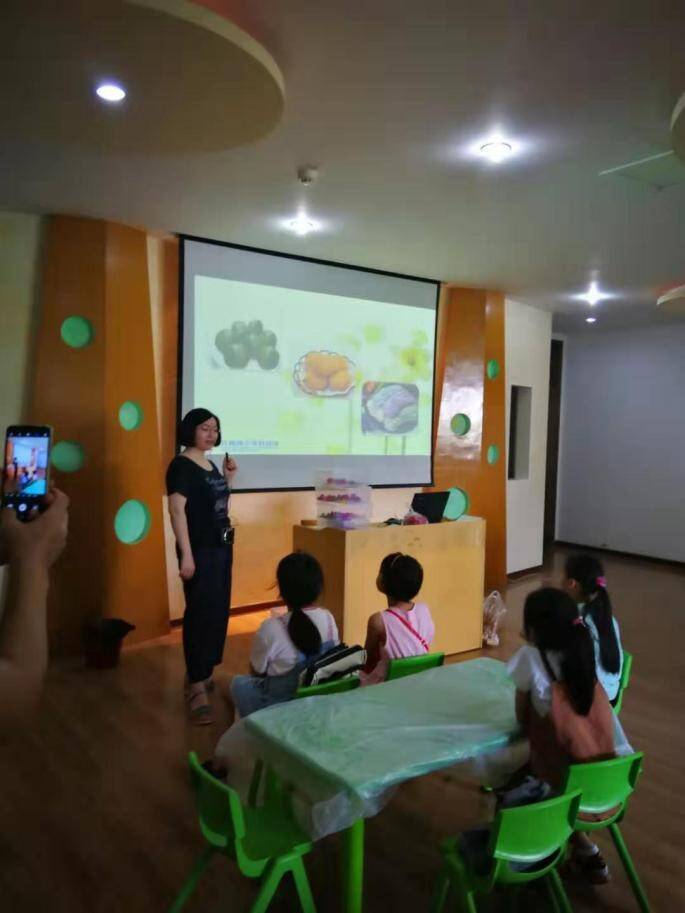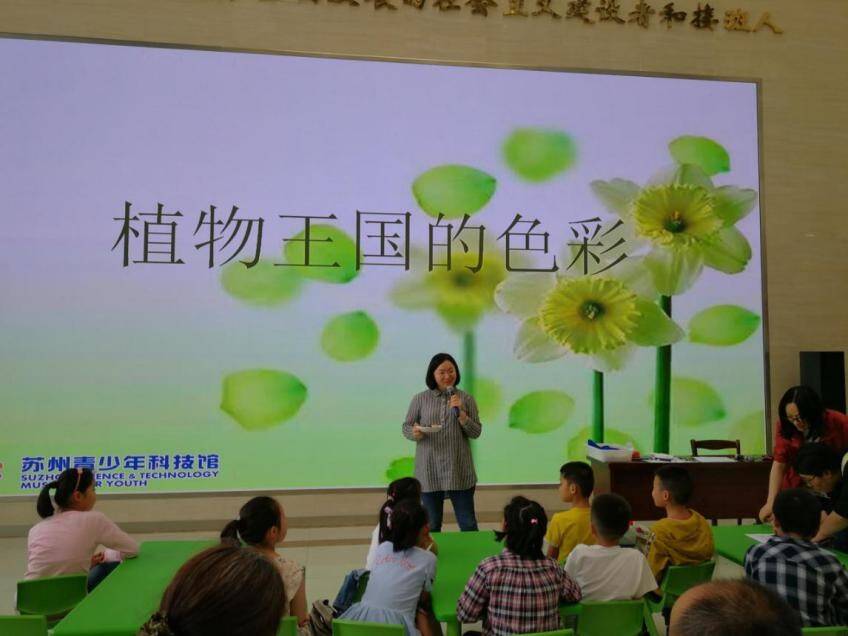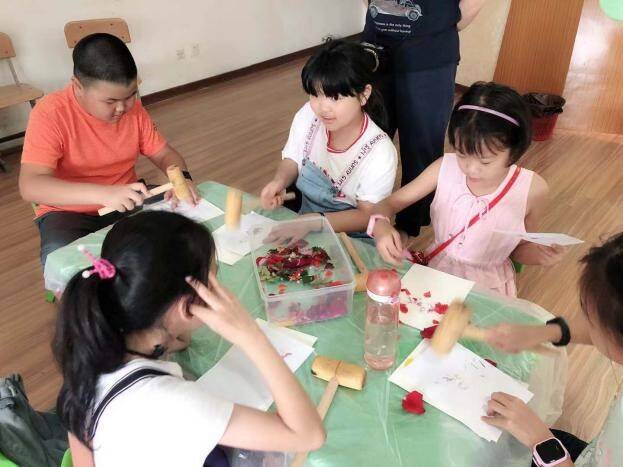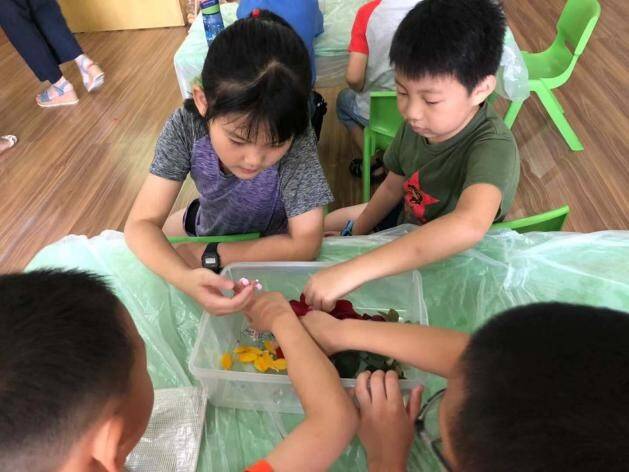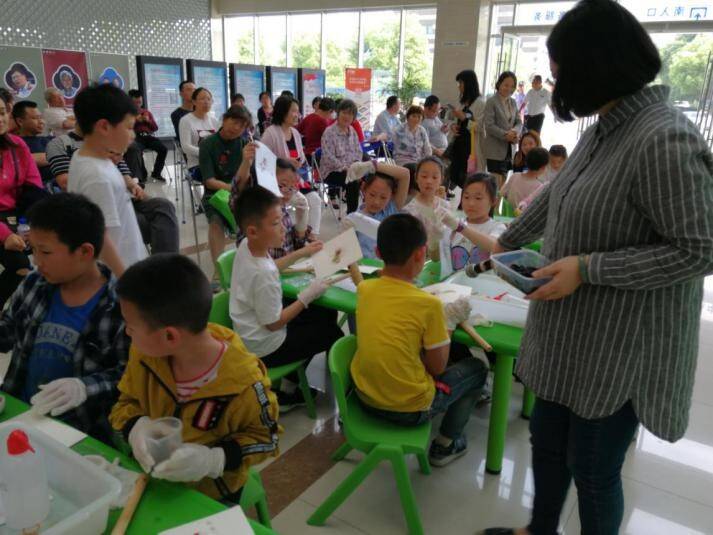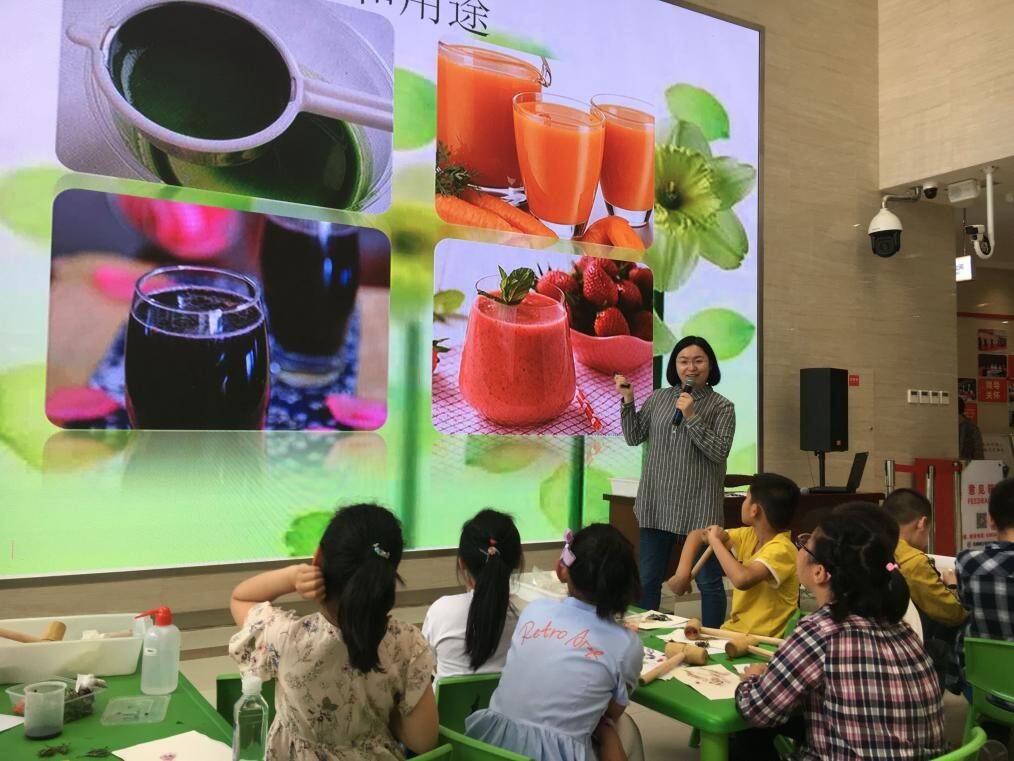- Background KnowledgeBackground Knowledge
- AssessmentAssessment
- WorksheetWorksheet
- ProcedureProcedure
- NotesNotes
- PreparationPreparation
- TimeTime
- GradeGrade
- ObjectiveObjective
- OverviewOverview
- The custom of eating green rice balls during the Qingming Festival
The custom of eating cold foods during the Qingming Festival originates from the old rule of fire prohibition in the Zhou Dynasty. According to the Rites of Zhou, there was a rule banning the use of fire in the middle of spring, so the people stopped cooking and only ate cold foods for three days. This period, 1-2 days before the Qingming Festival, is also called the "Cold Food Festival", during which people cannot make fire and only eat pre-prepared cold foods, while the green rice ball is one of these cold foods.
Green rice ball is a traditional snack prevailing in the south the Yangtze River. People mix wormwood juice with glutinous rice flour, and then wrap bean paste or lotus seed paste to make the green rice balls, which are neither too sweet nor too greasy, and carry a light but enduring aroma of the green grass.
- Water is the source of all life
Life on the earth first appeared in water. A large part of the body of many organisms is water. For example, a cow contains 74% water; a bacterium contains 75% water; and up to 85% of human body is water. There is an exhibit in our science museum called the "Water of Life", which can tell you how much water there is in our body. There is more water in plants. For example, 80% of a potato is water, and this number even tops 90% in certain plants, such as watermelon and tomato. Water is a magical substance that can dissolve many other substances. That's why different plants have different colors, tastes, etc. Therefore, different plants produce different juices—green, purple, yellow, sweet, bitter or sour. Of course, not all plants are edible—some plants are poisonous, and some can be used as medicine.
- History of fabric dyeing
Fabric dyeing is to dye fabrics into the required color to meet people's needs for colored clothes. Without chemically synthesized dyes, the ancients had to dye fabrics with the pigments extracted from local plants. In China, fabric dyeing has a long history of more than 2,800 years. As early as in the Qin and Han Dynasties, the dyeing techniques had seen great improvement. By the Tang Dynasty, with the transfer of textile printing and dyeing techniques from the minority ethnic groups in Southwest China to the Central Plains, the textile printing and dyeing techniques had witnessed unprecedented advances and spread.
- Tie-dyeing steps
Materials: white cotton handkerchief, rubber band, rubber gloves, plant juice, water, alum, etc.
Tie-dyeing steps
- Fold. Different patterns involve different folding methods. Pick the pattern you like and fold accordingly, or you can give rein to your own imagination.
- Tie. Tie the folded handkerchief firmly with multiple rubber bands.
- Dye. Put the tied handkerchief into the plant juice for dyeing. You can dye the handkerchief with one color or dye different parts into different colors.
- Wash. Remove the rubber bands from the dyed handkerchief, wash the handkerchief in clean water added with alum, and then air-dry it.
- The custom of eating green rice balls during the Qingming Festival
The custom of eating cold foods during the Qingming Festival originates from the old rule of fire prohibition in the Zhou Dynasty. According to the Rites of Zhou, there was a rule banning the use of fire in the middle of spring, so the people stopped cooking and only ate cold foods for three days. This period, 1-2 days before the Qingming Festival, is also called the "Cold Food Festival", during which people cannot make fire and only eat pre-prepared cold foods, while the green rice ball is one of these cold foods.
Green rice ball is a traditional snack prevailing in the south the Yangtze River. People mix wormwood juice with glutinous rice flour, and then wrap bean paste or lotus seed paste to make the green rice balls, which are neither too sweet nor too greasy, and carry a light but enduring aroma of the green grass.
- Water is the source of all life
Life on the earth first appeared in water. A large part of the body of many organisms is water. For example, a cow contains 74% water; a bacterium contains 75% water; and up to 85% of human body is water. There is an exhibit in our science museum called the "Water of Life", which can tell you how much water there is in our body. There is more water in plants. For example, 80% of a potato is water, and this number even tops 90% in certain plants, such as watermelon and tomato. Water is a magical substance that can dissolve many other substances. That's why different plants have different colors, tastes, etc. Therefore, different plants produce different juices—green, purple, yellow, sweet, bitter or sour. Of course, not all plants are edible—some plants are poisonous, and some can be used as medicine.
- History of fabric dyeing
Fabric dyeing is to dye fabrics into the required color to meet people's needs for colored clothes. Without chemically synthesized dyes, the ancients had to dye fabrics with the pigments extracted from local plants. In China, fabric dyeing has a long history of more than 2,800 years. As early as in the Qin and Han Dynasties, the dyeing techniques had seen great improvement. By the Tang Dynasty, with the transfer of textile printing and dyeing techniques from the minority ethnic groups in Southwest China to the Central Plains, the textile printing and dyeing techniques had witnessed unprecedented advances and spread.
- Tie-dyeing steps
Materials: white cotton handkerchief, rubber band, rubber gloves, plant juice, water, alum, etc.
Tie-dyeing steps
- Fold. Different patterns involve different folding methods. Pick the pattern you like and fold accordingly, or you can give rein to your own imagination.
- Tie. Tie the folded handkerchief firmly with multiple rubber bands.
- Dye. Put the tied handkerchief into the plant juice for dyeing. You can dye the handkerchief with one color or dye different parts into different colors.
- Wash. Remove the rubber bands from the dyed handkerchief, wash the handkerchief in clean water added with alum, and then air-dry it.
The teacher should encourage students to rate their own work in order to understand the effectiveness of learning. Some students might be good at conducting the hands-on experiments, while others might be not. The teacher will assess the accomplishment of the instructional objectives based on the answers given by students.
The teacher should encourage students to rate their own work in order to understand the effectiveness of learning. Some students might be good at conducting the hands-on experiments, while others might be not. The teacher will assess the accomplishment of the instructional objectives based on the answers given by students.
Exploring the Secrets of Plant Juice—Amazing Colors of the Plant Kingdom
Name: Grade: School:
- What is the Wujiang's specialty snack of green rice ball made of?
□ Glutinous rice flour, wormwood □Glutinous rice flour, pumpkin leaves □Flour, wormwood
□Glutinous rice flour, pigment
- Please conduct experiments with the provided tools and materials and fill in the following table.
| Plant name |
|
|
|
|
| Color of juice |
|
|
|
|
| Amount of juice |
|
|
|
|
- What are the main substances contained in plant juice?
□ Water □ Vitamins □ Anthocyanin □ Chlorophyll □ Minerals
- Plant juices can also be used to dye fabrics. Let us jointly design and make a tie-dye work of our own!
Exploring the Secrets of Plant Juice—Amazing Colors of the Plant Kingdom
Name: Grade: School:
- What is the Wujiang's specialty snack of green rice ball made of?
□ Glutinous rice flour, wormwood □Glutinous rice flour, pumpkin leaves □Flour, wormwood
□Glutinous rice flour, pigment
- Please conduct experiments with the provided tools and materials and fill in the following table.
| Plant name |
|
|
|
|
| Color of juice |
|
|
|
|
| Amount of juice |
|
|
|
|
- What are the main substances contained in plant juice?
□ Water □ Vitamins □ Anthocyanin □ Chlorophyll □ Minerals
- Plant juices can also be used to dye fabrics. Let us jointly design and make a tie-dye work of our own!
Stage 1: Lead-in. By observing various pastries such as the green rice ball, students will find that pastries have different colors, thereby triggering their cognitive conflict and stimulating their interest in inquiry.
Suggested duration: 10 minutes
| Teacher | Students |
|---|---|
| ①The teacher will display various foods such as green rice ball, pumpkin pie and spinach noodles, and pose questions to guide students to think about why the food is colored and where the colors in food come from. ②The teacher will introduce the custom of eating green rice balls during the Qingming Festival and how to make green rice balls, play a video about green rice balls, and introduce the theme of this educational activity through the question about where the colors in food come from. | Think about and discuss where the colors in food come from, and learn about the custom of eating green rice balls during the Qingming Festival. |
|
| |
| Activity Design: Design intent: guide students to think about where the colors in these foods come from by displaying various colored foods. Student analysis: The students may have eaten green rice balls, but do not know how green rice balls are made. Teaching strategy: The teacher will use foods to stimulate students' curiosity, engage students in discussions and thinking, and play a video to arouse students' interest in plant juices, so that they can undertake inquiry independently. | |
Stage 2: Inquiry. The teacher will guide students to use the given materials to conduct hands-on experiments to see the existence of juice in plants, and to test their conjectures by extracting the juice.
Suggested duration: 20 minutes
| Teacher | Students |
| ①Distribute experimental materials: plant leaves, flowers, carrots, fruits, preservation bags, mallets, mortars, etc. Assign the task: Please use the given materials to prove the existence of juice in plants.
| ①Students will discuss how to prove the existence of juice in plants (put it in a preservation bag and smash; use a juicer to get the juice; pinch with a nail; do not add water when cooking; when sitting on the grass and then getting up, the pants may be stained by color ...) Students will use the provided tools and materials to do experiments and fill out the worksheet.
|
| ②Scenario creation: If we are going to make green rice balls and yellow rice balls, we first need to get juices of different colors. Please think about how we can get the juices we want. | ②Discuss how to get the juices (juicing, cooking, grinding with mortar, etc.), choose materials and tools independently, and use different methods to get plant juices. |
|
| |
| Activity Design: Design intent: By creating a proper scenario, students can be stimulated to undertake the inquiry independently. Under the guidance of the teacher, students will discover, dig into and solve problems by themselves. Student analysis: During everyday learning, students gain indirect experience through textbooks, but they rarely have the opportunity to experiment by hand to gain direct experience. Students generally know that plants contain juice, but have never extracted the plant juice by themselves. Teaching strategy: Through inquiry-based learning, students will discover, dig into and solve problems on their own under the guidance of the teacher. | |
Stage 3: Explanation. Students will learn about the different uses of plant juice.
Suggested duration: 5 minutes
| Teacher | Students |
|---|---|
| ①Ask the question: What is the difference between the juices of different plants? | ①Students display the juices they have obtained through the experiment and discuss the differences (color, taste, etc.) |
| ②Knowledge introduction: Water is the source of all life. Ask the question: What substances in the plant juices lead to the difference colors and tastes of plants?
| ②Discuss what substances are contained in the plant juice (vitamins, pigments, minerals, etc.) Sum up and draw a conclusion: the different substances contained in plant juice determine the color, taste and use of the plant. |
|
| |
| Activity Design: Design intent: Students can summarize and discuss their own inquiry findings, while the teacher can introduce certain knowledge in this stage. Student analysis: Through the first two stages of inquiry learning, students have understood the basic characteristics of plant juices, but do not know much about the substances contained in plant juices, nor can they be sure of their uses. Teaching strategy: The teacher will help students learn to summarize the experimental processes and results, and to analyze plant juices dialectically. | |
Stage 4: Knowledge transfer. Students can learn to dye the fabric with plant juice.
Suggested duration: 20 minutes
| Teacher | Students |
|---|---|
| ①Knowledge introduction: the history of fabric dyeing. | ①Learn about the history of fabric dyeing. |
| ②Assign a task: ask the students to make a tie-dye work by themselves. | ②Make a tie-dye handkerchief. |
| ③Organize students to discuss other plants that can be juiced to dye the fabric. | ③Discuss other plants that can be juiced to dye the fabric. |
|
| |
| Activity Design: Design intent: The students find that the gauze is stained during the inquiry, thereby learning the dyeing function of plant juices, and then try to tie dye the fabric with plant juices. Student analysis: Students can rarely apply the knowledge they have learned in the past to solve real-life problems. Teaching strategy: The teacher can ask students to give the rein to their imagination and to make a tie-dye work by themselves. | |
Stage 5: Evaluation. Through the display of works and students' self-evaluation and mutual evaluation, students will be able to gain a deeper understanding of the uses of plant juices, learn about the close connections between humans and plants, and cultivate the enthusiasm to care for nature and to protect the environment.
Suggested duration: 5 minutes
| Teacher | Students |
|---|---|
| ①Organize students to display and introduce their own works. | ①Display and introduce their own works. |
| ②Summary: Mankind cannot live without plants. Plants can not only bring us foods, medicines and dyes, but also oxygen, water and so on. Nature is full of treasures. Let us protect it and explore it together. | ②Clean the table and take the work home. |
|
| |
Stage 1: Lead-in. By observing various pastries such as the green rice ball, students will find that pastries have different colors, thereby triggering their cognitive conflict and stimulating their interest in inquiry.
Suggested duration: 10 minutes
| Teacher | Students |
|---|---|
| ①The teacher will display various foods such as green rice ball, pumpkin pie and spinach noodles, and pose questions to guide students to think about why the food is colored and where the colors in food come from. ②The teacher will introduce the custom of eating green rice balls during the Qingming Festival and how to make green rice balls, play a video about green rice balls, and introduce the theme of this educational activity through the question about where the colors in food come from. | Think about and discuss where the colors in food come from, and learn about the custom of eating green rice balls during the Qingming Festival. |
|
| |
| Activity Design: Design intent: guide students to think about where the colors in these foods come from by displaying various colored foods. Student analysis: The students may have eaten green rice balls, but do not know how green rice balls are made. Teaching strategy: The teacher will use foods to stimulate students' curiosity, engage students in discussions and thinking, and play a video to arouse students' interest in plant juices, so that they can undertake inquiry independently. | |
Stage 2: Inquiry. The teacher will guide students to use the given materials to conduct hands-on experiments to see the existence of juice in plants, and to test their conjectures by extracting the juice.
Suggested duration: 20 minutes
| Teacher | Students |
| ①Distribute experimental materials: plant leaves, flowers, carrots, fruits, preservation bags, mallets, mortars, etc. Assign the task: Please use the given materials to prove the existence of juice in plants.
| ①Students will discuss how to prove the existence of juice in plants (put it in a preservation bag and smash; use a juicer to get the juice; pinch with a nail; do not add water when cooking; when sitting on the grass and then getting up, the pants may be stained by color ...) Students will use the provided tools and materials to do experiments and fill out the worksheet.
|
| ②Scenario creation: If we are going to make green rice balls and yellow rice balls, we first need to get juices of different colors. Please think about how we can get the juices we want. | ②Discuss how to get the juices (juicing, cooking, grinding with mortar, etc.), choose materials and tools independently, and use different methods to get plant juices. |
|
| |
| Activity Design: Design intent: By creating a proper scenario, students can be stimulated to undertake the inquiry independently. Under the guidance of the teacher, students will discover, dig into and solve problems by themselves. Student analysis: During everyday learning, students gain indirect experience through textbooks, but they rarely have the opportunity to experiment by hand to gain direct experience. Students generally know that plants contain juice, but have never extracted the plant juice by themselves. Teaching strategy: Through inquiry-based learning, students will discover, dig into and solve problems on their own under the guidance of the teacher. | |
Stage 3: Explanation. Students will learn about the different uses of plant juice.
Suggested duration: 5 minutes
| Teacher | Students |
|---|---|
| ①Ask the question: What is the difference between the juices of different plants? | ①Students display the juices they have obtained through the experiment and discuss the differences (color, taste, etc.) |
| ②Knowledge introduction: Water is the source of all life. Ask the question: What substances in the plant juices lead to the difference colors and tastes of plants?
| ②Discuss what substances are contained in the plant juice (vitamins, pigments, minerals, etc.) Sum up and draw a conclusion: the different substances contained in plant juice determine the color, taste and use of the plant. |
|
| |
| Activity Design: Design intent: Students can summarize and discuss their own inquiry findings, while the teacher can introduce certain knowledge in this stage. Student analysis: Through the first two stages of inquiry learning, students have understood the basic characteristics of plant juices, but do not know much about the substances contained in plant juices, nor can they be sure of their uses. Teaching strategy: The teacher will help students learn to summarize the experimental processes and results, and to analyze plant juices dialectically. | |
Stage 4: Knowledge transfer. Students can learn to dye the fabric with plant juice.
Suggested duration: 20 minutes
| Teacher | Students |
|---|---|
| ①Knowledge introduction: the history of fabric dyeing. | ①Learn about the history of fabric dyeing. |
| ②Assign a task: ask the students to make a tie-dye work by themselves. | ②Make a tie-dye handkerchief. |
| ③Organize students to discuss other plants that can be juiced to dye the fabric. | ③Discuss other plants that can be juiced to dye the fabric. |
|
| |
| Activity Design: Design intent: The students find that the gauze is stained during the inquiry, thereby learning the dyeing function of plant juices, and then try to tie dye the fabric with plant juices. Student analysis: Students can rarely apply the knowledge they have learned in the past to solve real-life problems. Teaching strategy: The teacher can ask students to give the rein to their imagination and to make a tie-dye work by themselves. | |
Stage 5: Evaluation. Through the display of works and students' self-evaluation and mutual evaluation, students will be able to gain a deeper understanding of the uses of plant juices, learn about the close connections between humans and plants, and cultivate the enthusiasm to care for nature and to protect the environment.
Suggested duration: 5 minutes
| Teacher | Students |
|---|---|
| ①Organize students to display and introduce their own works. | ①Display and introduce their own works. |
| ②Summary: Mankind cannot live without plants. Plants can not only bring us foods, medicines and dyes, but also oxygen, water and so on. Nature is full of treasures. Let us protect it and explore it together. | ②Clean the table and take the work home. |
|
| |
①The teacher can collect tender leaves with more juice and petals with bright colors.
②Students must abide by the code of civilized conduct, avoid making any loud noise, take good care of public property, and follow the laboratory discipline. The dye will be used during the experiment, and the teacher must keep reminding students not to stain their clothes.
③The teacher needs to give psychological counseling for students who have failed the experiment.
①The teacher can collect tender leaves with more juice and petals with bright colors.
②Students must abide by the code of civilized conduct, avoid making any loud noise, take good care of public property, and follow the laboratory discipline. The dye will be used during the experiment, and the teacher must keep reminding students not to stain their clothes.
③The teacher needs to give psychological counseling for students who have failed the experiment.
Venue: technology exhibition hall, lobby, school, etc.
Preparations:
A. Worksheet;
B. Activity materials (to be prepared as per the quota for 2 persons per group)
| SN | Item | Description | Quantity/Group |
| 1 | Mallet |
| 2 |
| 2 | Sketching paper | 14cm*20cm | 2 sheets |
| 3 | White paper | A4 | 2 sheets |
| 4 | Petals, leaves and fruits of different colors |
| Some |
| 5 | Mortar |
| 1 |
| 6 | Ziplock bag | 20cm*14cm | 2 |
| 7 | Disposable rubber gloves |
| 2 pairs |
| 8 | Beaker | 200ml | 1 |
| 9 | Gauze | 20cm*20cm | 1 |
| 10 | White cotton handkerchief | 40cm*40cm | 2 |
| 11 | Rubber band |
| 20 |
| 12 | Vegetable dye |
| 1 bottle |
| 13 | Plastic basin |
| 1 |
Venue: technology exhibition hall, lobby, school, etc.
Preparations:
A. Worksheet;
B. Activity materials (to be prepared as per the quota for 2 persons per group)
| SN | Item | Description | Quantity/Group |
| 1 | Mallet |
| 2 |
| 2 | Sketching paper | 14cm*20cm | 2 sheets |
| 3 | White paper | A4 | 2 sheets |
| 4 | Petals, leaves and fruits of different colors |
| Some |
| 5 | Mortar |
| 1 |
| 6 | Ziplock bag | 20cm*14cm | 2 |
| 7 | Disposable rubber gloves |
| 2 pairs |
| 8 | Beaker | 200ml | 1 |
| 9 | Gauze | 20cm*20cm | 1 |
| 10 | White cotton handkerchief | 40cm*40cm | 2 |
| 11 | Rubber band |
| 20 |
| 12 | Vegetable dye |
| 1 bottle |
| 13 | Plastic basin |
| 1 |
About 60 minutes.
About 60 minutes.
Grades 3-4, no more than 20 students at a time.
Grades 3-4, no more than 20 students at a time.
(1)Scientific knowledge
- By displaying various kinds of pastries, the teacher will guide students to understand the juice contained in plants and their differences;
- Learn how to extract juice;
- Master the method of tie-dyeing with plant juice.
(2)Scientific exploration
- Guide students to use the given materials to conduct hands-on experiments to see the existence of juice in plants;
- Guide students to use their own methods to extract juice from the leaves, flowers and fruits of plants, and learn to observe, record and compare;
- In the process of extracting juice and tie-dyeing, the teacher will guide students to discover, explore and solve problems on their own.
(3)Scientific attitude
- Use intuitive phenomena to stimulate students' curiosity about plant juices and arouse their interest in exploring knowledge;
- Guide students to try different materials, ideas and methods in undertaking the inquiry, thereby enjoying the fun of innovation.
(4)Science, technology, society and environment
- Understand that our everyday life is inseparable from plants, and that humans and plants are interdependent;
- Cultivate students' awareness to take good care of nature and to take part in environmental protection.
Note: The above-given objectives are derived from the Standards for the Science Curriculums in Primary Schools issued by the Ministry of Education of the People's Republic of China in 2017.
(1)Scientific knowledge
- By displaying various kinds of pastries, the teacher will guide students to understand the juice contained in plants and their differences;
- Learn how to extract juice;
- Master the method of tie-dyeing with plant juice.
(2)Scientific exploration
- Guide students to use the given materials to conduct hands-on experiments to see the existence of juice in plants;
- Guide students to use their own methods to extract juice from the leaves, flowers and fruits of plants, and learn to observe, record and compare;
- In the process of extracting juice and tie-dyeing, the teacher will guide students to discover, explore and solve problems on their own.
(3)Scientific attitude
- Use intuitive phenomena to stimulate students' curiosity about plant juices and arouse their interest in exploring knowledge;
- Guide students to try different materials, ideas and methods in undertaking the inquiry, thereby enjoying the fun of innovation.
(4)Science, technology, society and environment
- Understand that our everyday life is inseparable from plants, and that humans and plants are interdependent;
- Cultivate students' awareness to take good care of nature and to take part in environmental protection.
Note: The above-given objectives are derived from the Standards for the Science Curriculums in Primary Schools issued by the Ministry of Education of the People's Republic of China in 2017.
Why are the green rice balls (a seasonal Qingming snack) greenish? Why are the noodles and pumpkin pies sold in the supermarket so colorful and beautiful? Starting with the color of food, this educational activity will arouse students' interest in exploring plant juices. Students can personally prepare plant juices and observe the differences between them. In addition to making beautiful foods, what else can we do with the color of plant juice? Students will make a tie-dye work by themselves to improve their hands-on skills and to learn about the history of dyeing.
Keywords: plant juice; color; tie-dye
Why are the green rice balls (a seasonal Qingming snack) greenish? Why are the noodles and pumpkin pies sold in the supermarket so colorful and beautiful? Starting with the color of food, this educational activity will arouse students' interest in exploring plant juices. Students can personally prepare plant juices and observe the differences between them. In addition to making beautiful foods, what else can we do with the color of plant juice? Students will make a tie-dye work by themselves to improve their hands-on skills and to learn about the history of dyeing.
Keywords: plant juice; color; tie-dye


